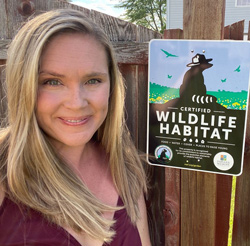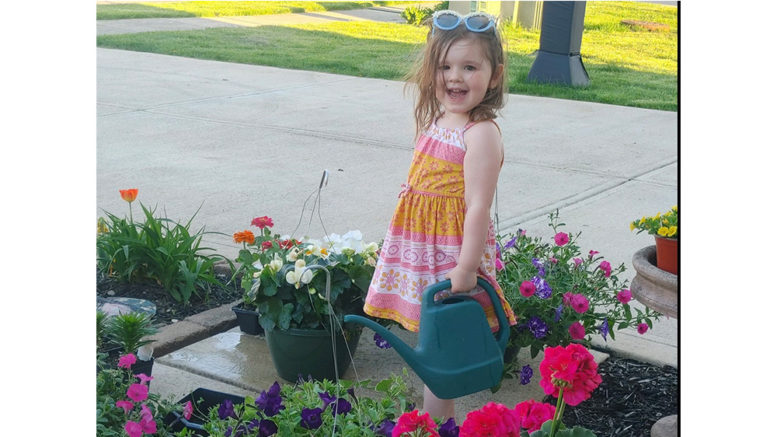By STU CLAMPITT
With only one quarter of an acre of yard available at her Fishers home, fourth-grade teacher Megan Rathz recently had her yard recognized by the National Wildlife Federation (NWF) as a certified wildlife habitat.
Rathz reached out to The Reporter to tell others how they can do the same regardless of the space available.
NWF recognizes properties for certification that “commit to sustainability, providing essential elements of wildlife habitat: food, water, cover and places to raise young.”

Rathz
“This is something anyone can do, even someone with a balcony in an apartment. You don’t need a huge property to make it one that protects wildlife,” Rathz told The Reporter. “As many new building and housing developments threaten the habitats for so much of our wildlife, many people would be surprised to see that they’re already doing things to protect our wildlife without even realizing it.”
According to Rathz, it is more about the attention to detail when choosing flowers for your yard than about the size of the space you have.
“When I first heard about it, I thought you would need a ton of land or money to be able to get that kind of recognition, but that’s just not the case,” Rathz said. “Any average yard can do it. You could even do it with an apartment property.”
Both her mother and stepfather are gardeners. Rathz grew up learning a variety of skills from her master gardener mother.
“Their yard is absolutely gorgeous,” Rathz said. “My stepdad said he had got his yard certified a summer or two ago. When I first heard about it, I thought it must be some huge, involved process. He told me, ‘You’d be surprised. You are already doing a lot of it anyway.’ I looked into it because he didn’t make it sound as intimidating.”
Rathz said a big part of what she has gained from the NWF certification is the desire for outreach – for teaching other people. NWF recognizes sustainability in food, water, cover and places for animals to raise their young. Another part is what Rathz called purposeful planting.
“That is about really being deliberate in what you plant,” Rathz said. “Not just picking a flower because you like the color or the way it smells, but asking if it is a native plant. Is this something that is going to promote pollinators? Is this a plant that will be a place for caterpillars to lay their eggs?”
In Indiana, monarch butterflies are in danger. Milkweed, also known as butterfly weed, is the only plant on which monarch butterflies can lay their eggs.
“What I have really learned is how to heighten my awareness of what I am planting,” Rathz told The Reporter. “Why I am planting it? It is something that will foster and protect wildlife? Is this something a pollinator is going to benefit from? Is this a native plant that is so vital to our region? Many of us have daylilies in our yard and don’t realize that aside from their beauty, they actually provide shelter and cover for animals and their young.”
Rathz said gardening has always been an escape and retreat for her. She said she finds great solace in her garden.
“Nothing is more rewarding than seeing a bumblebee or butterfly land on one of your flowers or seeing that first hummingbird of the season,” Rathz said. “The reward of seeing flowers return year after year, providing sanctuary for our wildlife is truly remarkable to me.”
By taking small batches of flowers from one home to another to replant and cultivate, she finds a connection to past, present and future.
“Some of these flowers are from when I was a little girl, in my childhood home,” Rathz said. “To know that my mom took care of these same flowers that my children now see me take care of is so special to me. My little girl has such an interest in helping me in the garden and learning about wildlife, and that is the most precious thing about it.”
“Flowers stand the test of time. They come back to us each year and find us wherever we are in our life that season. Children grow up and change, just as life is constantly evolving, but these flowers keep coming back just as we remember them, reminding us of our wonderful memories from different times in our lives. My hope is one day my daughter and grandchildren still have my flowers and take care of them just as I have and think about how they can make their own yards a sanctuary for our wildlife.”
Photos provided

